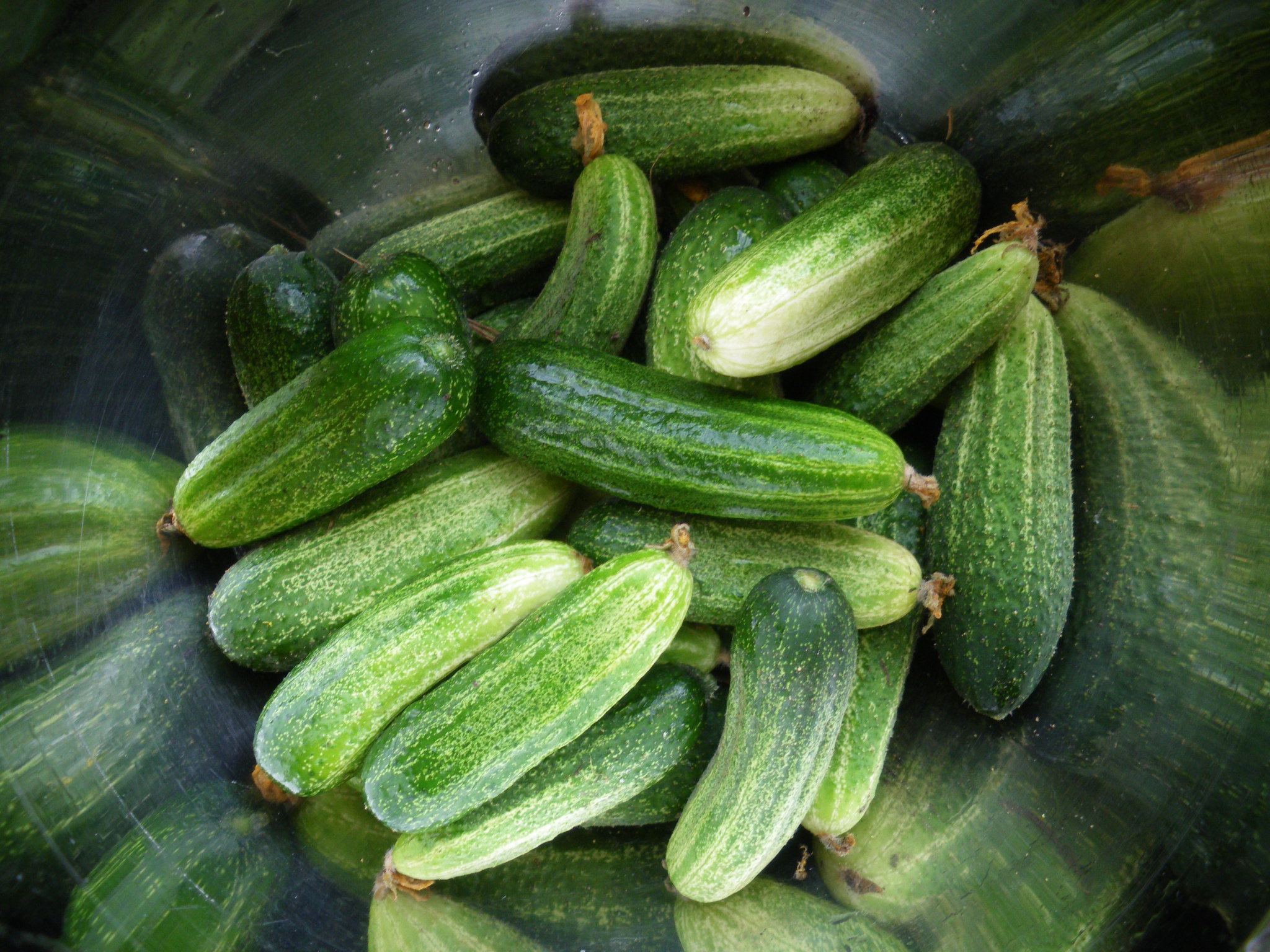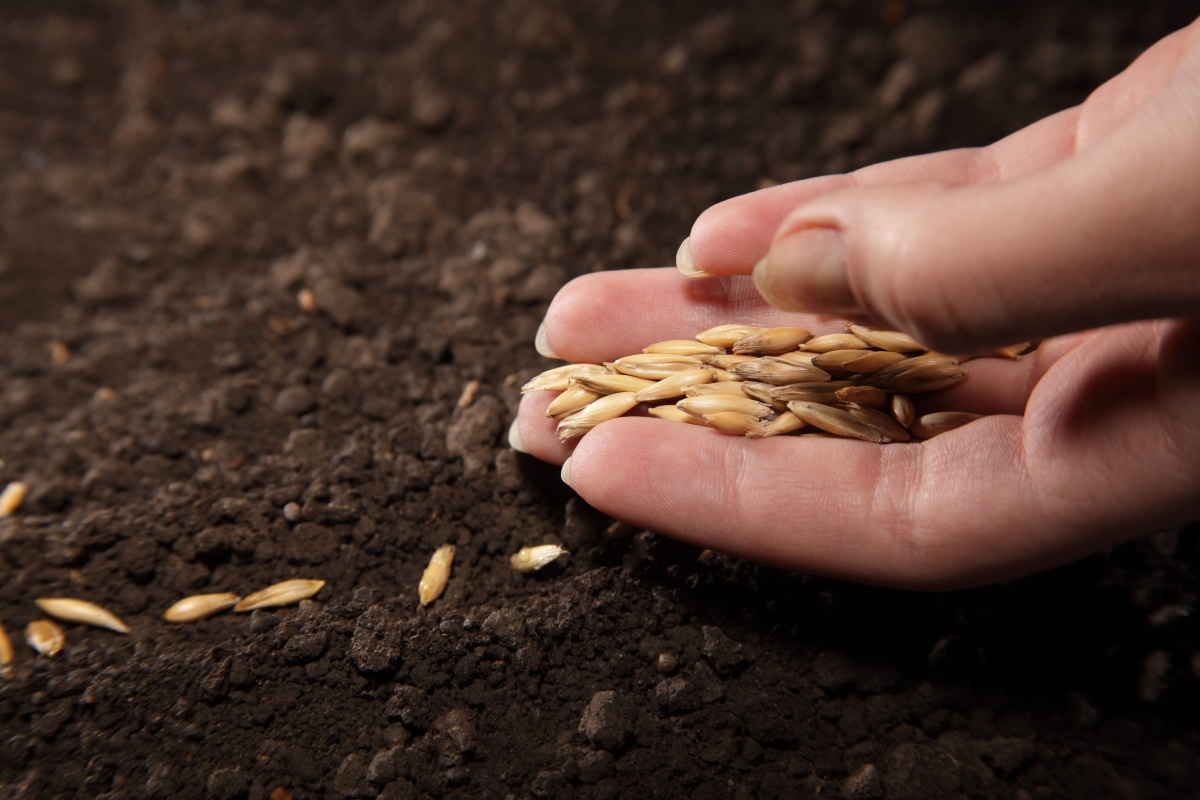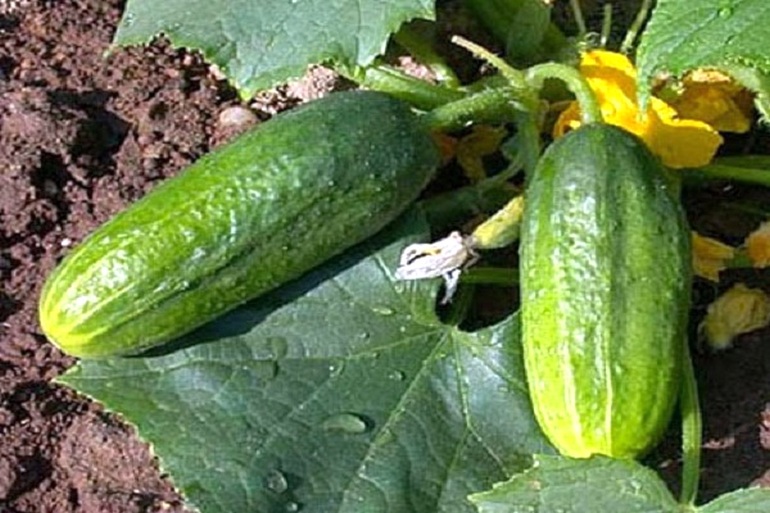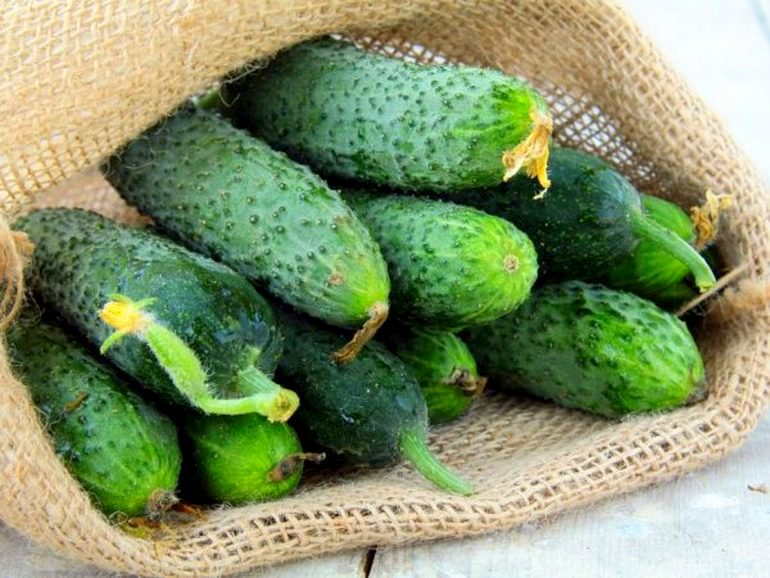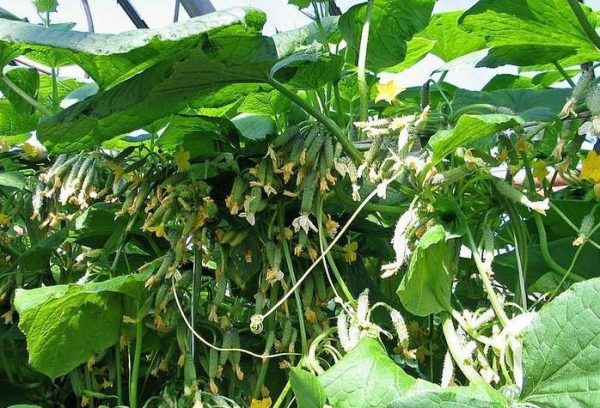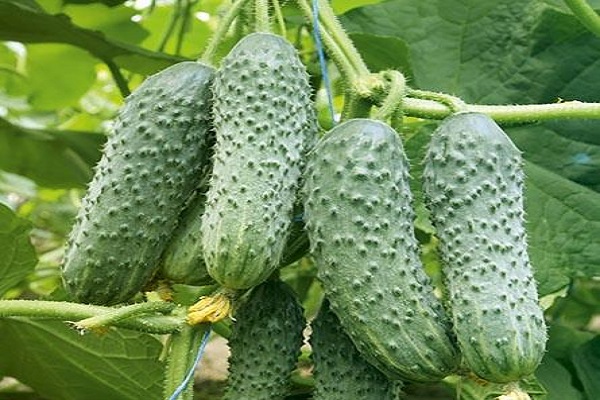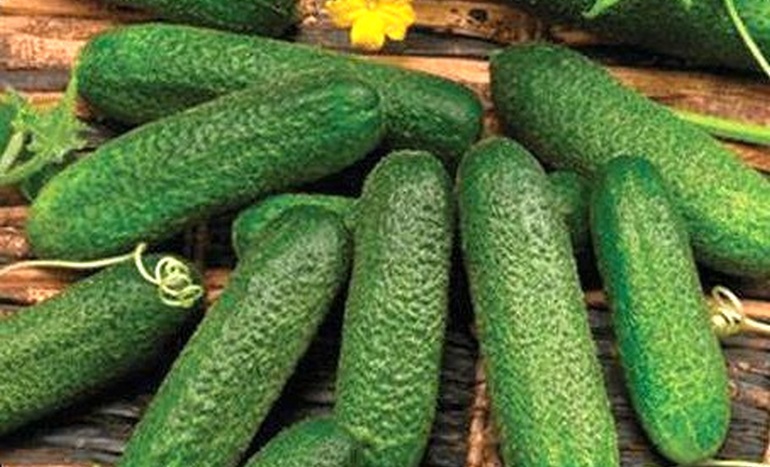Content:
Cucumbers are one of the most common vegetable crops in our country. Cucumber Finger is one of the many varieties of this vegetable family. It was bred and registered in Volgograd in 2001 by the experimental plant growing station of the All-Russian Research Institute named after V.I. Vavilov. The culture has proven itself well, suitable for growing both in the open field and in greenhouses. The variety is suitable for planting with seeds and seedlings.
Main characteristics of cucumbers Fingers
- Early ripe.
- Bee-pollinated.
- Indeterminate (the stem grows throughout the growing season).
- High resistance to powdery mildew.
- High productivity.
Since this species was originally intended for planting in open ground, it calmly tolerates spring-autumn temperature drops, although it is not frost-resistant. However, both seeds and seedlings are planted only when the earth warms up during the day to a temperature of at least 15 degrees during the day and does not drop below 8 degrees at night. After planting, the bed is wrapped in non-woven material, film, or a mini-greenhouse is built to protect the young growth.
This vegetable variety, like its hybrid cousin the Boy with a Thumb, gives a high yield. Throughout the growing season, it is possible to get about 7 kg of harvest from the bush. After the first shoots appear, this early ripe varietal cucumber begins to bear fruit in 38-50 days and evenly yields a harvest for two months. Cucumber ovaries are formed in bunches. The body of the fruit is green with small white veins. The surface has a slight tuberosity, the needles are almost absent. Weight can reach 110-120 g, length 10-12 cm. Taste without bitterness. Another undoubted plus is that Finger cucumbers perfectly tolerate transportation.
Another feature of the plant is its flowers, which are mostly “female”. They are pollinated by bees, so it is best to cultivate cucumber beds in a quiet, windless place with little shade. These vegetables do not like direct sunlight, preferring diffused light to them, because the sun can burn their delicate leaves. And the growth of a cucumber mainly occurs in the dark. Cucumbers planted in a greenhouse have the opposite principle of care. Flowers, on the other hand, must be well blown for pollination, or you can put a hive in a greenhouse.
The leaves of this variety have a standard appearance, they are dark green in color. In the agricultural reference book, the variety is described as vigorous, medium branched. The plant can be very tall. The stem grows up to 1.5-2 meters, so it needs a garter or trellis, which the lash will wrap around like a liana. This will greatly facilitate plant maintenance and harvesting.
Growing cucumbers
When growing cucumbers by seeds, they are planted in weeded, loosened, fertilized and well-shed soil. They are laid in a hole 2 cm deep, covered with earth, then mulched with peat, then covered with a film. Although this variety can also be planted by direct sowing without soaking the seeds, it is preferable to prepare the seeds by soaking them in a damp cloth in a warm place until the sprout is hatched. This will speed up the growth of the cucumbers.
When growing cucumbers with seedlings in prepared soil, shallow grooves of 1-1.5 cm are made. The seeds are laid, sprinkled with earth on top and covered with a film. Seedlings will appear in 3-7 days. After the cotyledons open and the first true leaf appears, the seedlings dive. Before this, the sprouts must be watered. When transplanting, the stalk is sprinkled with soil up to almost half the length. Seedlings are planted in open ground or a greenhouse when 3-4 real leaves appear. This usually happens by 20-21 days. In the description on the seed package, the indicated planting density is 3 plants per m2 in a greenhouse and a greenhouse, 4 plants per m2 outdoors.
Care, feeding and watering
Finger's beds need standard care:
- It is necessary to ensure that the earth is loose, without weeds.
- The first three weeks after germination or transplantation, the plant must be fed with nitrogen-containing fertilizers. This will help boost growth and allow the cucumber to grow stronger.
- When flowers begin to appear on the stem, the cucumber will need to be fed with a phosphorus-containing fertilizer.
- During fruiting, humic fertilizers or mullein are suitable for feeding and better growth of cucumbers. The procedure is carried out 3-4 times during the entire fruiting period.
One of the recipes for fertilizing a plant during fruiting: in a bucket of water heated in the sun, dilute half a liter of mullein and about a teaspoon of potassium sulfate.
Water the plant at the root, in the morning or in the evening, with water that has settled and heated in the sun. You need about a bucket of water for one adult bush.
You can start tying cucumbers when the lash reaches a height of 30 cm. By this time, it will already have 5-6 leaves and antennae will appear. It is best to start the garter early in the morning, before the sun starts to warm up, or in cloudy weather. Thin strings should not be used, they may damage the stem. It is best to use a material 2 cm wide. The vertical trellis is installed in advance so as not to damage the root system of the bush. When forming lateral branches, it is advisable to tie them to a separate rope so that they do not touch the central stem. If the lash outgrows the height of the trellis, pinch the top of its head to stop growth.
Diseases and pests
This variety is resistant to various diseases, including powdery mildew, from which it is not protected, for example, cucumbers of the Boy with a finger variety. However, the best prevention against disease is good soil drainage and pre-sowing treatment.
For prevention, the plant can be treated with both a chemical and folk remedies. The leaves are treated with a decoction of the tops of tomatoes, potatoes or soapy water from ticks, beetles and aphids. Ash is used to treat the soil near the roots of the bush from slugs and other parasites.
Cucumber Finger has no pronounced disadvantages. Rather, they are features of the variety, such as bee pollination or high plant growth. But all this is compensated by the unique aromatic taste of fresh cucumber from the garden.
